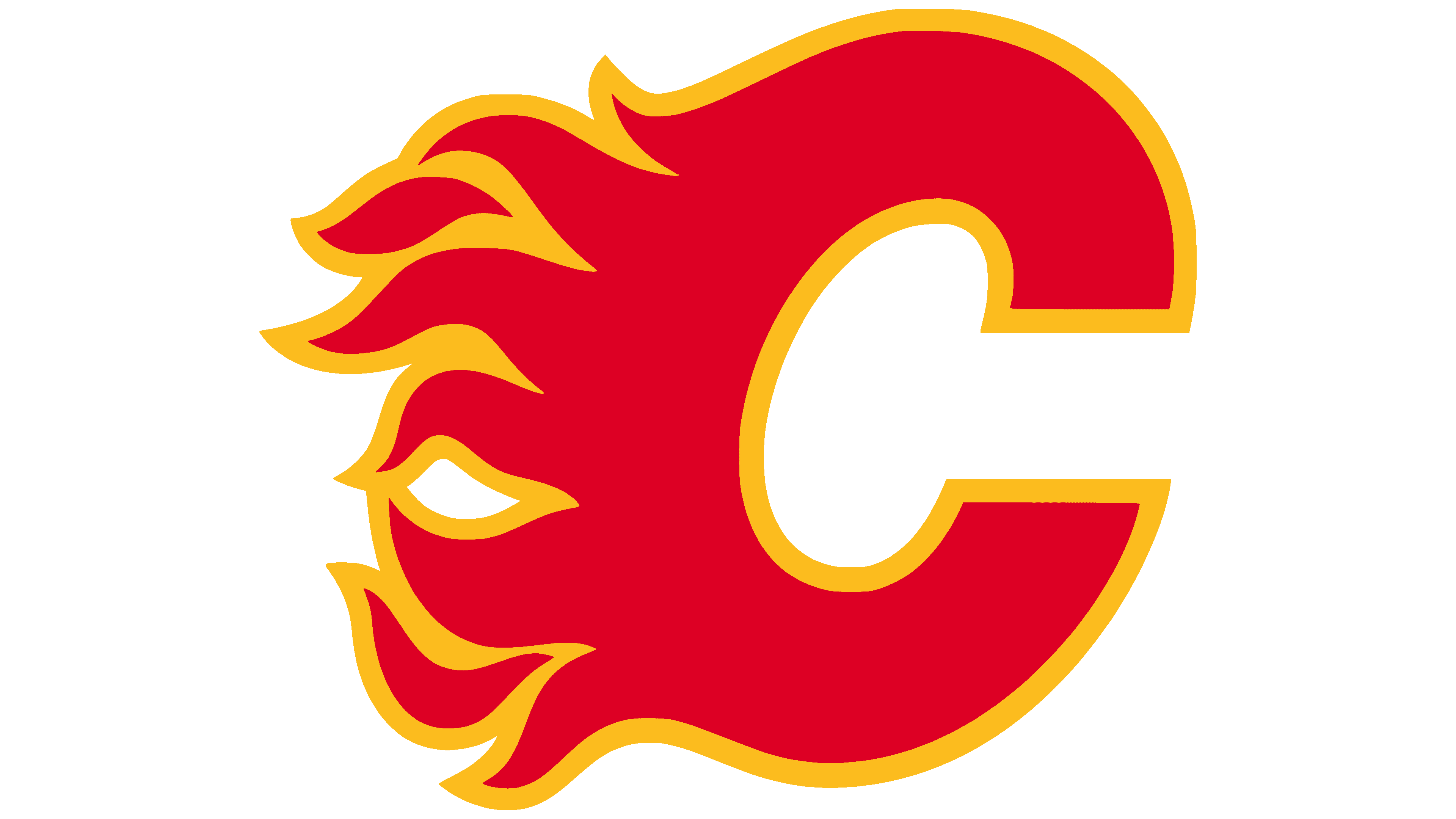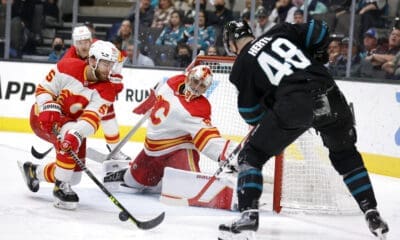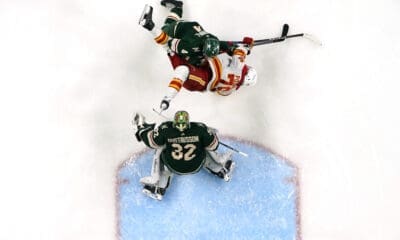Calgary Flames
Mikael Backlund – A Statistical Analysis (Part 2 of 2)
In the second part, we examine the statistical impact of having Mikael Backlund on the team and his ability to improve play around everyone. Note: All data used is dated from March 9th when this article was started unless specified.

In the first part of this mini-series on Mikael Backlund I touched on his rise from Sweden to Kelowna briefly, and onward and upwards to the National Hockey League. Though the stats community has been well aware of the impact Backlund has had on his team for a few years now, he doesn’t often get the same exposure others do due to his production not being on the same level of someone like Sean Monahan or Johnny Gaudreau.
That said, he is a catalyst for the ever-important drive towards gaining the possession side of things. As the league adopts a more logical and open mind to examining the underlying numbers side of the game, one thing is very apparent: you need to have a capable roster from top to bottom.
Strength at the forward position starts at centre and with a future of Monahan and a healthy Sam Bennett, the Flames need to re-sign Mikael Backlund to guarantee a potential 1-2-3 punch down the middle. Even if Bennett may require softer minutes, we have a solid stop-gap in Backlund, an up and coming one in Monahan, and a veteran one if needed (and used properly) in Matt Stajan.
Mikael Backlund: A Snapshot
Via Own The Puck's HERO charts by Dom Galamini here is a brief snapshot of what Mikael Backlund has been for a couple seasons now.
In literal terms, he has been performing as an optimal second line centre albeit offensively performing around the level of a reasonable third line centre. The biggest thing to take away from this is Backlund's innate and often discussed ability to drive possession. When it came to UA CF60, UF CA60, and UA Corsi% he is performing as a top flight first line centre.
Injuries derailed some of his season but he came back with 10 points in 10 games before cooling off a bit. As the team has been an incredibly low possession team that is trending further and further down, his numbers aren't as strong as last year's, but his impact is no less valuable or impressive.
His 3.7 Corsi Rel is tops on the team relative to forwards and his 46.9% CF is tied with rookie Josh Jooris for the Flames’ best. Calgary is 42.7% without Backlund on the ice, which is worse than last season. He’s also doing it with a 39% offensive zone start, considerably lower than last season at this moment.
When it comes to the FF% (Fenwick For – shot attempts missed or on net excluding blocked) he ranks at a 4.1 FF% Rel on the team behind captain Mark Giordano (players with small sample sizes removed). His 48.2% FF is third on the team behind team leading Josh Jooris (49.7%) and Giordano (48.6%).
Previous Seasons
Now, or at least over the last few seasons Backlund has been focal in anchoring and driving possession. In terms of his performance on the Flames, he ranked first in Corsi Rel on the team at 4.6 in 32 games for the Flames. He was a 50.9% CF at even strength and the team was 46.3% with Backlund on the bench. He ranked just ahead of Brodie by 0.1 Corsi Rel for the 2012-2013 season.
Last season, in the first full rebuild season he was the best possession forward on the team, having a massive impact like Giordano and Brodie. His 7.3 Corsi Rel was 0.5 ahead of former Flame Mike Cammalleri. His impact was very noticeable at 51.7% CF whereas the team was 44.4% without him. In regards to Fenwick, he was third on the team behind Giordano with a 7.6 FF% Rel to Giordano's 8.8. FF% he ranked behind the captain again in second with 53.3% to Gio's 56.3%.
He also did this with a 46.4% offensive zone start percentage. The majority of his zone starts at even strength were in the defensive zone or the neutral zone. The trio of Gio, Brodie, and Backlund is synonymous with any success the team had last season. They kept the team in games.
Player Comparisons
I wanted to explore the concept of comparable players in the league so that we can illustrate how he stacks up against similar players, or, in many ways, a similar projection of what he is shaping up to be. For this, I crowdsourced Twitter for some opinions and suggestions beyond what I thought up on my own. Here we have the following list:
- Mikko Koivu – Captain of the Minnesota Wild, drafted sixth overall in 2001. Age: 31
- Jordan Staal – former Pittsburgh Penguin, current member of the Carolina Hurricanes drafted second overall in 2006. Age: 26
- Nazem Kadri – Maligned and criticized centre for the Toronto Maple Leafs, drafted 7th overall in 2009. Age: 24
| Player | CF60 | CA60 | PDO | G60 | A60 | P60 | CF% | CF% Off | FF% | SH% | ZSO | Salary |
| Mikael Backlund | 52 | 58.9 | 101.7 | 0.7 | 1.2 | 1.9 | 46.9% | 43.1% | 48.2% | 9.5% | -6.5 | $1.5M |
| Mikko Koivu | 58.1 | 58.1 | 98.8 | 0.4 | 1.1 | 1.5 | 54.6% | 50.7% | 55.2% | 6.8% | 10.1 | $6.0M |
| Nazem Kadri | 58.1 | 48.2 | 100.7 | 0.8 | 1.0 | 1.8 | 50% | 45.3% | 45.3% | 10.3% | -0.7 | $3.1M |
| Jordan Staal | 71.8 | 47.3 | 94.1 | 0.4 | 0.7 | 1.2 | 60% | 50.2% | 57.8% | 7.1% | -3.5 | $6.0M |
Adjusted Point Totals by TOI
With regards to point production alone, I first looked at Backlund using the aforementioned players' ES 5v5 unadjusted TOI to project what he would have at his existing pace, but under their TOI. I used data from up to March 9th prior to any games played that night.
| Player | Goals | Assists | Points | Adjusted TOI Used |
| Adjusted to Koivu’s TOI | 10.74 | 17.89 | 28.63 | 894.7 |
| Adjusted to Kadri’s TOI | 10.77 | 17.95 | 28.72 | 897.6 |
| Adjusted to Staal’s TOI | 4.99 | 8.32 | 13.31 | 416.1 |
| Backlund Unadjusted | 6 | 10 | 16 | 500 |
So for example: Backlund would have 10.74 goals (round up to 11 if you want) and 17.89 assists (18 rounded up) if he had Koivu's TOI. This would be at Backlund's existing 9.5% even strength shooting percentage, which is a current career high over last year's 5.3% and the prior year's 7.8%.
If we wanted to adjust the other players to Backlund's TOI we would have:
| Player | Goals | Assists | Points |
| Mikko Koivu | 3.35 | 8.94 | 12.29 |
| Nazem Kadri | 6.68 | 8.36 | 15.04 |
| Jordan Staal | 3.6 | 6 | 9.6 |
Let's stick with the Koivu comparison because after digging around through data and conversing on Twitter, it's very apparent points-wise that Backlund is shaping up to have production similar to Koivu. That's not bad at all for someone who will hopefully be anchoring the third line.
| Player | G60 | A60 | P60 | GF% | TOI |
| Mikael Backlund | 0.5 | 0.9 | 1.5 | 49.1% | 3489.6 |
| Mikko Koivu | 0.5 | 1.2 | 1.7 | 52.5% | 6529.1 |
Keep in mind the difference in age and tenure in the NHL, though the similarities are visible, points-wise. Backlund is a 5.5 Corsi% Rel for his career while Koivu is 5.3, though there is a significant TOI difference. Keep in mind possession by proxy of shot attempts and the stats around it show it often drops due to age eventually.
HERO Chart Comparisons
A quick look at the main comparisons I used in this:
Kadri may very well be the best example when it comes to dCorsi (we'll touch on that further down), though their similarities in terms of their TOI/Game and UA CF60 are the most apparent.
My personal favourite comparison that is shockingly similar, and a hopeful projection of where Backlund could be heading. Diving deep into comparisons there are a lot of incredibly similar results for both players.
Jordan Staal’s season and production haven’t been the most picturesque this season with injuries, as well as the Hurricanes, despite being a decent possession team, having issues winning. He’s a very great comparison for Backlund, though.
dCorsi – Kadri / Backlund comparison (Data compiled includes March 9th played games)
In terms of another method of measuring possession, Stephen Burtch of Pension Plan Puppets and Sportsnet, a dude who is super smart, devised another way to measure possession. dCorsi measures the differential between expected and observed Corsi.
One of the closest comparable players to Backlund appears to be Nazem Kadri of the Toronto Maple Leafs. A lot of similarities exist across the board. It's a great method of comparing two players, though this side of the numbers game isn't always the easiest to access for the fan.
The biggest thing to keep in mind is that their impacts last season are very similar, but Backlund's strong defensive play was responsible for the -117.17 dCAImpact. A negative dCAImpact explains an ability at shot suppression. dCorsi reads a bit differentially than other metrics. That said, Kadri didn't have the strongest numbers against him.
Positive dCFImpact = Good, negative = bad. Positive dCAImpact = bad, negative dCAImpact = good.
A visual look at Mikael Backlund and the Calgary Flames
Blue is good, red is bad. Further left is more difficult starts, while to the right is easier starts. More towards the top indicates more TOI against competition while further to the bottom indicates less TOI.
Backlund is performing well while having more defensive zone starts relative to the rest of the team. This is one of the aspects of the game flushed out with the "analytics movement".
In a league so heavily focused on points or old world views of “shutting down the opposition”, visualizations like these give a chance to show players like ol’ number 11 for what they are: very capable. Outside of former teammate Curtis Glencross, the only players remotely close to him are Monahan, linemate David Jones, and Paul Byron.
WOWY – Backlund is everyone's best friend
When it comes to Mikael’s impact on teammates, it’s undeniable how he improves the abundance of players around him. A prime example this season is Lance Bouma. If you’re unfamiliar with the WOWY concept it stands for WithOut and With You. Think U2. It’s used to measure a player’s impact on a teammate and see if the player benefits or suffers from play with that particular individual.
Lance Bouma is having a career year – in fact, the duo are putting up numbers together. Shown above is the impact of Bouma playing with Backlund, Backlund away from Bouma, and Bouma on his own. As you can see, he's given a considerable boost at even strength when with Mikael.
The sudden emergence of Bouma's offense, often driven by Backlund's performance, is one of the more intriguing stories of this season. The biggest thing to keep in mind is Bouma has spent a lot of time this season propped up by linemates.
It should be noted that with Backlund on the ice, he's registered five goals and five assists in their 242:14 together. That's a pace of 2.72 GF/60. Notably on top of that, in 73 shots he's registered a remarkably high 16.4% shooting percentage at even strength. Last year, in his first full season, he registered an even strength shooting percentage of 5.3% on 76 shots.
A lot of Bouma's growth can definitely be attributed to their play on the ice together. They work well together in some circumstances, though I feel like Hartley is still trying to make a square peg fit into a round circle with them.
I picked David Jones as another example of a player with an acceptable sample size getting a boost. Outside of Bouma, Jones is the other player Backlund has played the most with at forward (222:01 together). Jones is an interesting case as he's made of glass and can't fully live up to the contract he signed in Colorado after scoring an unsustainable amount of goals. The only thing to keep in mind is production wise, Jone has one goal and six assists while on the ice with Mikael.
In CF% alone, Jones sees a huge noticeable boost when with Backlund. The common theme here is Backlund is making his linemates better. He does this in many ways mentioned throughout this post: zone entries, smart passes, being positionally aware, leading breakouts, setting players up, etc, etc. He is taking bottom six-forwards and padding their numbers.
His Future and the pending potential contract
So, Backlund is an RFA at the end of the season after signing a very modest bridge deal. The deal, signed in July 2013, was of a $1.5M AAV for two years. Why Brad Treliving is waiting might be because of the injuries at the beginning of the season, and the want to see how he performs for the remainder of the season.
Optimally you want to lock his kind of skill up for the remaining RFA years, as well for as many UFA years you expect him to be performing at his peak (23-28 in most cases). Backlund turns 26 on March 17th and with that, we should hopefully expect a four to five year deal.
It's a fair term, for sure. It's also a contract with length on it that is capable being moved, god forbid he signs and is eventually traded. So what do you pay a guy who is in his prime but isn't the hugest offensive contributor, yet impacts his team positively? For me, I'd be fine with anything in the $4.0 to $4.75M range AAV per year. I think it's more than acceptable based on what he does.
With underlying numbers on the cusp of potentially being used in negotiations, things could honestly change. If his agent is well versed in it, he could make a strong case for what we've highlighted here.
There are so many other facets of Backlund's game I wanted to get to including shot suppression, scoring chances, and further impact on his teammates. Utilizing his two primary linemates is the best example for now until more available data to build sufficient cases for or against are available. Look for something in the coming months to fully examine this great player.
Data and information sourced from:
War on Ice || Hockey’s Future || Dobber Sports || HockeyDB || Hockey Reference || TSN || Own The Puck || NHL.com
by Mike Pfeil









